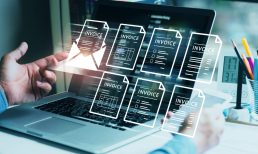Sometimes the headlines don’t tell the whole story. In the payments and commerce space right now the top stories, at a macro level, are about corporate intrigue (GameStop and Robinhood), new business models (buy now, pay later) and big retail (Walmart, Amazon). But dig a little deeper and the stories are about something deeply essential to the payments ecosystem. And it’s not about Vlad Tenev or Jeff Bezos. It’s about the most important element in any business: the customer.
Because even though the headlines migrate toward executives and controversy, the customer is the common element to every successful business and the downfall of every business failure. As an executive in the payments business for more than two decades, Payroc CEO Jim Oberman knows that the customer and the customer experience will define his company’s success. And although the headlines this week sail above the customer on some levels, they are all about the customer on a more basic level.
“Everybody’s trying to say, ‘OK, how do we improve the experience, make it simple and make it convenient,’” Oberman told PYMNTS CEO Karen Webster. “I think the companies that are going to win that are the ones that deliver the experience. Firms are successful because they make things smart and they make things easy. And I think that’s the common thing you’re seeing wherever you go in the industry, whether it’s on the card side or the issuing or the processing side. I think the big banks are going to figure it out too. Eventually they have the capital to get there.”
Beyond The Hype At Robinhood
The week was full of controversy about Robinhood, as CEO Vlad Tenev and other players in the GameStop trading controversy were hauled before Rep. Maxine Waters’ House Financial Services Committee where Tenev apologized for his company’s part in the bizarre pricing run that overvalued a marginally profitable brick-and-mortar retailer. As Oberman sees it, this is not about the headlines. It’s about the individual investor.
Oberman said he recently opened a Robinhood account after investigating what his son, who is in his late 20s, was doing with his account. The intent Oberman was looking into centered around whether the app could actually add value for the non-sophisticated investor. And he wanted to see if the system could prey on those investors. His take? The digital nature of the connection, void of actual human advice, creates a distance between the investor, the money invested and its consequences. He was also concerned that it raises the confidence level of the investor when they’re not experienced enough to understand the consequences. Again, it’s the customer, not the executives that should be at the center.
Advertisement: Scroll to Continue
“These are dangerous situations with some of the companies that are attracting these investors,” Oberman said. “AMC, for example, is in an industry that is fraught with danger. They had to restructure their debt and get extensions and waivers from lenders. And in my opinion, no investor that’s investing that kind of money should be playing in that kind of risk element. And that’s what the Robinhood app could lead itself to.”
BNPL As Throwback
Oberman and Webster also discussed another issue that has created a new customer experience: buy now, pay later (BNPL). It has never been far away from the news, but it picked up a lot of attention with Affirm’s earnings announcement on Feb. 11. Those earnings showed solid metrics for 2020 and a case for its continued growth in 2021. However, the pace of that growth was called into question as the company expected third-quarter gross merchandise volume (GMV) to decline to between $1.80 billion and $1.85 billion, compared to the $2.1 billion reported for the previous quarter. That revision sent its shares down 8.7 percent in after-hours trading.
As the head of a payment processing company, Oberman has kept a close eye on the BNPL space and likes what he sees. He likens it to the old-school department store credit cards such as Sears that introduced many consumers to the concept of credit, and eventually set the stage for the explosion of Mastercard and Visa in the 70s and 80s. Those cards were the first generic extension of credit that Oberman recalls his family using.
“What I like about what’s happening with buy now pay later is that there’s a lot of creative, financial technology companies that have the intelligence to extend credit to a consumer fairly,” he said. “And then they’re working it into a really cool experience with the seller of something like a product that our company extends. It’s a program called Quick Fee, which is a payment plan to make payments on your accounting fees. If you’re a small business, that means you could pay over nine months instead of paying the accounting firm upfront. So I love what’s happening with buy now pay later. And it’s also a creative alternative to banking solutions, which we know is subject to more regulations.”
Oberman doesn’t see BNPL as a major threat to existing credit card networks, but does see it as a credible competitive threat to banks because BNPL companies are doing a great job building a positive customer experience. As he did with Robinhood, Oberman got his own experience before judging the category by ordering a Peloton through Affirm, which he found to be very positive.
“I think it comes down to quick and easy,” he said. “And I don’t know if it could prey on a consumer who’s having a difficulty getting credit. I think that comes down to how the BNPL firms interact with underwriters. So will this get into another form of subprime lending? It might. And then, you know what happens? There are always these subprime lenders who are falsely accused of predatory type lending practices. And they’re really legitimate. So again, when you start doing these things, it opens itself up to some bad actors getting in the system.”
Walmart’s Digital Adventures
Oberman drew some interesting conclusions from Walmart’s earnings, which were announced Tuesday (Feb. 16). Walmart’s Q4 earnings showed that its U.S. same-store sales rose 8.6 percent, while its increasingly important digital businesses saw revenues rise 69 percent. Going forward, the retailer said its continuing operations would see low single-digit sales growth, with operating income and EPS flat to up slightly. At the same time, Walmart said it planned to increase its capital expenditure budget by about 30 percent to $14 billion to stay ahead of demand, improve the customer experience and increase productivity.
“Walmart is one of the giants that is seeing ways to deliver brick-and-mortar experience and a delivery digital experience, and it’s all going to come together,” he said. “And we’re praying for this too, as well as hoping that the small retailer will also embrace these techniques. We have a lot of our merchants that are trying to do the same things Walmart is trying to do, so I think Walmart’s got a good shot at grabbing some market share from Amazon.”



